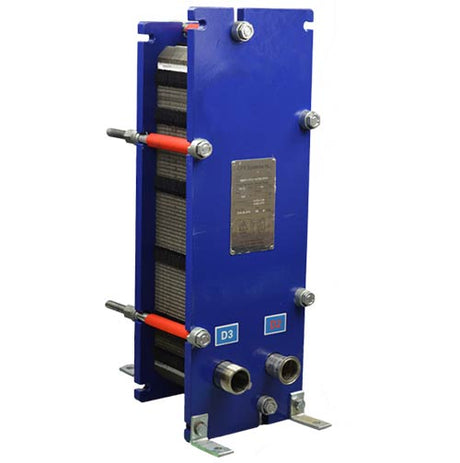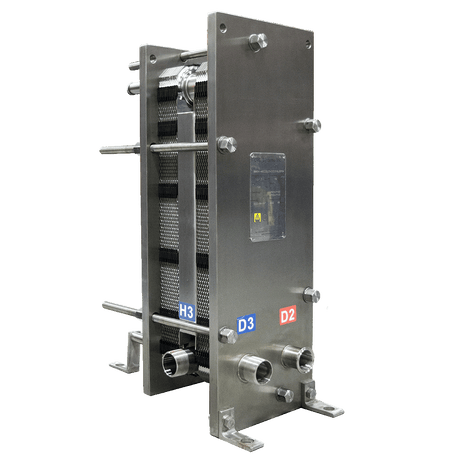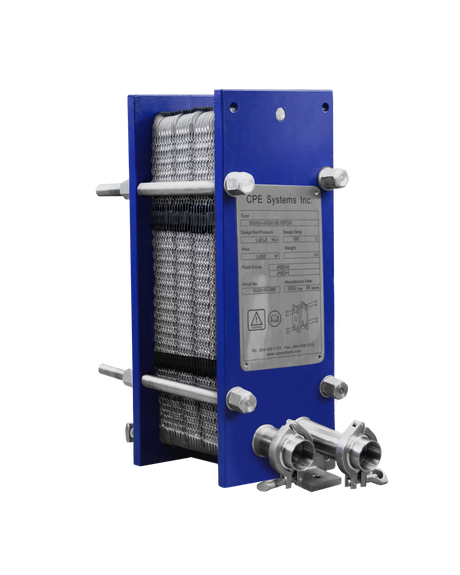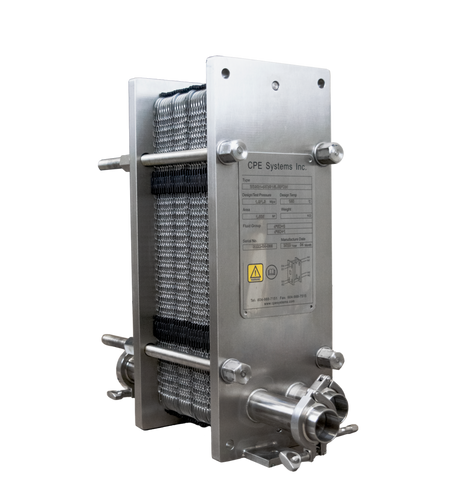While brewers have traditionally used air circulation to chill their wort the modern brewery now just uses heat exchangers. While this means you can brew year round (hot days make for poor cooling), less bacteria and yeasts from the air get in your brew and that it prevents dimethyl sulfide buildup (with its characteristic“cooked vegetable” taste) caused by a long cooling process, the main reason for a heat exchanger is that it really makes your brew significantly faster.
If you’ve read about brewing you’ve probably heard about counterflow heat exchangers or counterflow chillers. These wort chillers are the most efficient way to cool your batch without massive refrigeration units. Any aspiring brewer should understand how they work!
A counterflow chiller is any heat exchanger that runs its cold liquor in the opposite direction of its wort. If you’re homebrewing, then you’re probably thinking about two coiled copper tubes which look like the following.
This design runs your wort through the heat exchanger in the opposite direction of the cold liquid. As the hot wort enters one side of the counterflow chiller, it transfers its heat into the copper pipes around it, which in turn transfer it into the water running counterflow. The water has already had significant time (all the time it takes to get from one end of the chiller to the other) to absorb heat from the wort at this point, so it’s already quite warm - though still cooler than the hot wort. As the wort runs down the line, the water in the pipes around it get increasingly cooler - all the way down to the original water temperature. In theory this would allow an infinitely long chiller to cool wort to the temperature of the water being used in it.
However, once you start dealing with serious amounts of beer, this kind of wort chiller just doesn’t cut it! You need something a little more efficient, and a little easier to clean. Fortunately, the same concepts can be applied at a larger scale using...
Plate Heat Exchangers
Probably the most popular form of heat exchanger you’re going to find in a brewery, the plate heat exchanger is a highly efficient and compact unit, the use of which is only really limited by its inability to handle differing pressures between plates. This makes them less useful for condensation or other industrial applications, but PERFECT for liquid to liquid applications such as chilling wort.

How does a plate heat exchanger work?
Just like with the counterflow chiller pictured above, you run hot wort through one of the heat exchanger pipes, and cold liquor (usually water) through the other in counterflow. This sends wort down one side of the plate, and water up the other (or water down one side and wort up the other).
Since time exposed to the plate equals greater heat transfer, these plates are corrugated to increase overall surface area that the fluids contact and total time in contact with the plate. These plates can then be stacked to increase the time that the cold liquor spends in contact with the plate, further cooling your wort.
(skip to 1m16s to see a good depiction of this)
If you’ve bought a plate heat exchanger from us, it’s been sized to your production in barrels and will cool down your wort within 30 minutes. Otherwise you can calculate the rate of heat transfer with Q = UA∆Tm with U being the heat transfer coefficient, A the total plate area, and ∆Tm the Log mean temperature difference.
Yeah, it’s much easier to just select the BBL production you want on our site.
If you’re interested in reading more about the math behind heat exchangers, I’d recommend reading M.K.Bassiouny and H. Martin’s Flow distribution and pressure drop in plate heat exchangers—I U-type arrangement.
Finally, for more technical information on plate heat exchangers see our CPE-30 and CPE-60 manuals.





